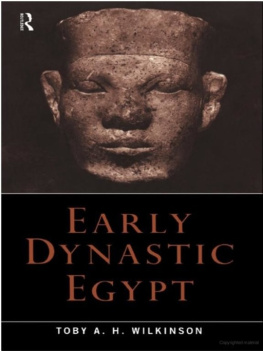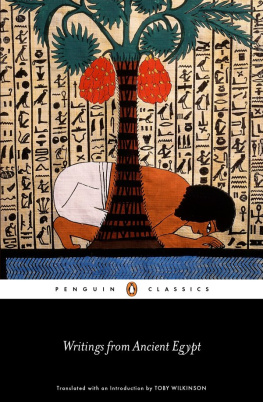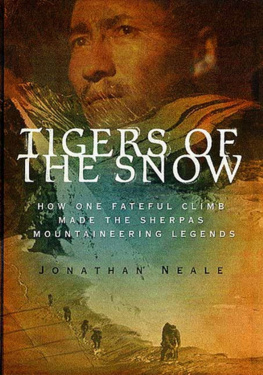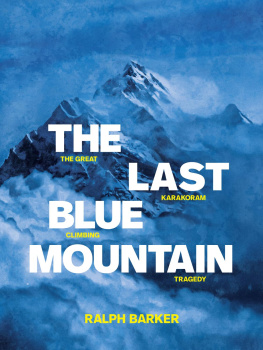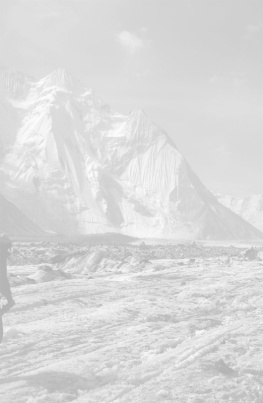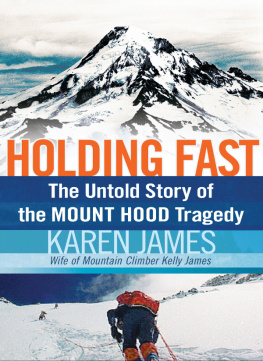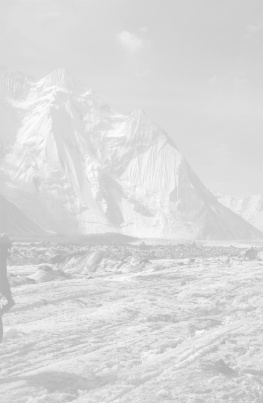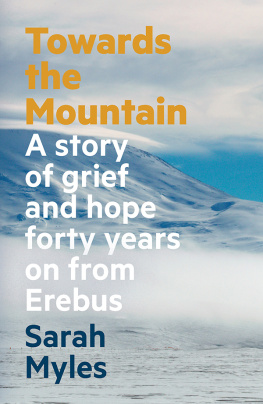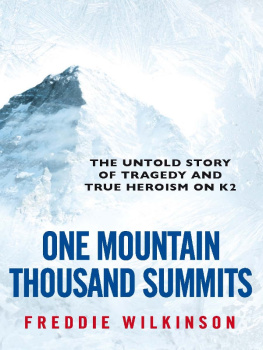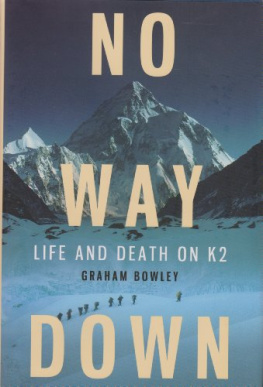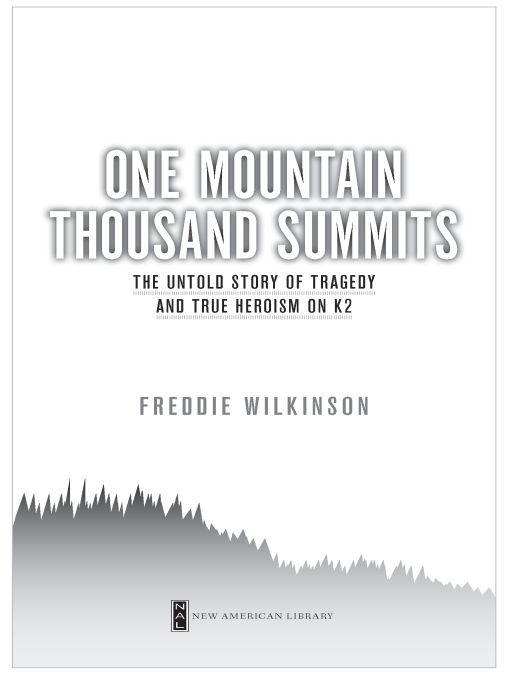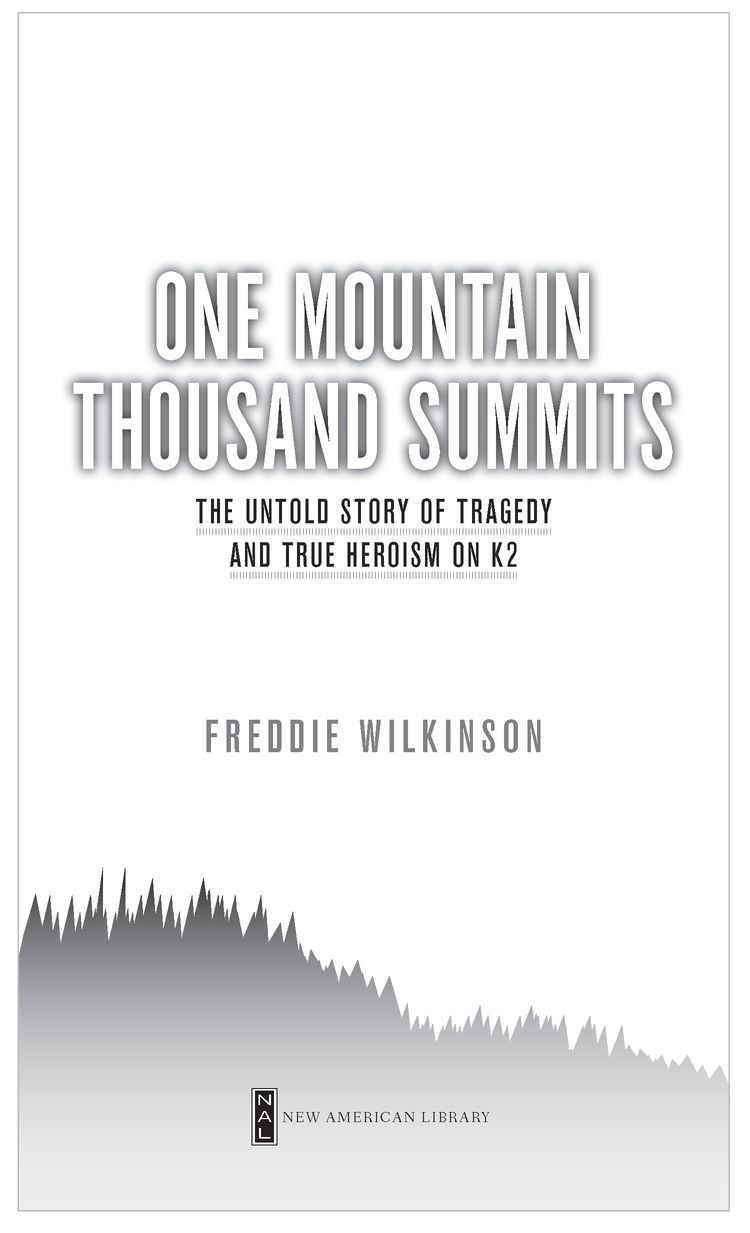Table of Contents
For Janet Bergman
PROLOGUE
Four voices spoke in the night.
The mountain around them was windless and still. No moon showed. Breathing the air felt like breathing shards of glass. The voices spoke in anxious staccato bursts, the speech pushed from somewhere deep within the gut of each man, forced up out of the lungs and through their cracked lips to dissipate into darkness. It was a strange language, mixed with the occasional English word, but if you listened carefully there was a melody lost in the indecipherable cadences:
Hamile pahila fixed lines ko tupo khuchnu parcha.
We have to find the top of the fixed lines.
Yo ta derai naramro avalanche aucha jasto cha.
These are very bad avalanche conditions. This is a wind slab.
La! Batoi chaina.
Whoa! Theres no trail.
Sabai jana eutai route ma janu parcha avalanche.
Keep everyone together on one path or it will trigger an avalanche.
As the four conferred in terse declarations, the others were mostly silent. A few were sitting down, their heads drooping toward the ground, the beams of their headlamps focusing tighter on the small patch of snow at their feet. One or two might have already fallen asleep. The rest coughed and wheezed in the biting cold of the night sky at eighty-five hundred meters, but no one had the energy to speak.
We need to keep descending, Pemba said, switching to slightly clipped English. Everyone stand up! Two more headlamps bobbed down toward them, jumping a small crevasse and splashing into their collective pool of light. It was Cas and Marco. The last two to leave the summit. No one else moved.
Pemba looked around him, trying to focus on each individual beam. There were his three teammates, Cas, Wilco, and Gerard; the Italian, Marco; the Korean leader, Mr. Kim, his partner Ms. Go, and three more of their teammates; the Frenchman, Hugues, and his Pakistani guide, Karim. Eleven climbers, Pemba thought, plus Pasang Lama, Chhiring Dorje, Jumik Bhote, and himself. Fifteen people, and every one of them was wrecked from the struggle to stand on top of the mountain.
Somewhere in the darkness below, Pemba knew, was the top anchor of the lines they had fixed earlier that day, on their ascent to the summit. Now, those ropes were quite literally their lifeline back to Camp IV, another five hundred meters in elevation below on the Shoulder of the Abruzzi Ridge. Without them, they would have to descend the exposed sections of water-ice in the Diagonal snowfield and the Bottleneck couloir unroped. It would be every man for himself. Pemba glanced at the exhausted men around him one more time. If they didnt get to the fixed lines, he knew, the weaker ones were surely lost. They had to navigate precisely down the interminable thirty-degree slope, searching for the highest anchor, an old hunk of spectra line that emerged from the surface of the mountain at the very edge of the serac. Pemba knew it was somewhere in the darkness, perhaps another hundred and fifty vertical meters below. Scarcely a hundred meters above them, resting peacefully in the eerie calm of that night, was the summit of K2.
They keep falling asleep, Chhiring responded, switching back to Nepali. And they cant walk in a straight line either.
At a lower elevation, the terrain separating them from the security of the fixed lines would not be considered excessively challenging; it wasnt much steeper than an expert ski trail. But the mountain was in unforgiving conditions, stripped bare by weeks of hurricane winds. Anyone who fell would not stop.
The others were looking at Pemba. Pemba spoke.
Sabai jana eutai rope ma bandnu, he said. Everyone should tie together on a rope, Pemba repeated in English. We need to make belay, to find the proper route to the top of the fixed lines.
Only one voice responded. Yes, Marco Confortola said, I agree with what you propose to do. The strain of the previous eighteen hours crept into his voice.
The four climbing Sherpas looked at one another. Each mans visage was hidden behind stretch balaclavas and the thick hoods of their down parkas. But in the shadows cast by their headlamps one could faintly see the general contours of their faces, the flat noses and broad sweep of Asiatic features. They nodded in agreement.
Loose turns of rope lay stacked at the feet of Jumik Bhote, the sirdar of the Korean expedition. The five-millimeter Kevlar line was thin and light compared to other climbing ropes, but with a breaking strength of more than five thousand pounds. It was more than sixty meters longthe last of the approximately six hundred meters of line that had left camp that morning. They had almost fixed it as well, but at the last moment Pemba and Jumik decided to use a section of old line they found in place from the previous season, and carry the length of new rope to the summit in case of an emergency.
Jumik and Pasang Lama had left the summit with their Korean clients an hour ahead of the others. They started using the rope almost immediately: Jumik hastily built an anchor by stabbing his ice ax into the hardened snow and attached one end to it. Pasang Lama descended first to anchor the bottom end of the line with his ax as well. Then their five clients shuffled down, holding the line for balance, keeping slight tension on it in case they slipped. Once all had joined Pasang Lama at the lower anchor, Jumik removed his ax and down-climbed with the other end of the rope. They managed a couple of pitches of descent in this manner. Then the other summiteers began to catch up with them.
By the fourthor was it the fifth?pitch, Pasang Lama noticed more headlamps on their rope, one by one, descending toward him. He waited for Jumik to appear with the end of the rope, but other lights kept arriving instead, more climbers joining him at his stance until they were one connected constellation of fifteen lights. Individual teams and clients and responsibilities dissolved in the empty night air as the four Nepalis discussed what to do nextthe choice seemed mostly made for them. They had become one entity, descending together.
And so they began again.
Jumik Bhote went first on the rope to build the low anchor, with Pasang Lama, who had fixed the final section of ropes that morning. Chhiring went in the middle to make sure everyone stayed on the trail and to keep the weakest from sitting down. Pemba went last. Any mistakes, a simple trip over his crampons or a misjudged stepand there would be nothing to stop him.
They moved at a stuttering pace, Chhiring often tugging the rope this way and that to keep the men moving in a straight line. In front, Jumik and Pasang stopped frequently to peer down the mountain slope, looking for the top of the fixed lines. The beams of their headlamps showed nothing but the icy skin of the mountain falling into blackness, and the occasional cookie-cutter imprint of a crampon track. They had to be careful: just below the top anchor, Pasang remembered, there was a ten-meter slope of exposed glacial ice that waited like a fatal trap. They had to be on the ropes.
After several more pitches of descent, Pasang Lama plunged his ax into the snow to make another anchor. The mountain was less steep than before. He couldnt see any ropes. One by one, the antiseptic halogen lights arrived at the anchor behind him. A biting wind began to blow. It blew a stream of snow crystals that sifted down the mountain and sounded like rain. Pasang Lama noticed that Little Kim, the one he had given the rest of his oxygen to just below the summit, was shivering badly. Pasang called to the others. He was beginning to feel very cold himself. Pemba appeared.


